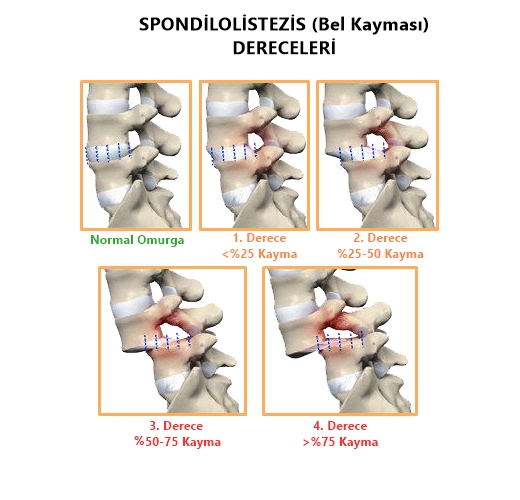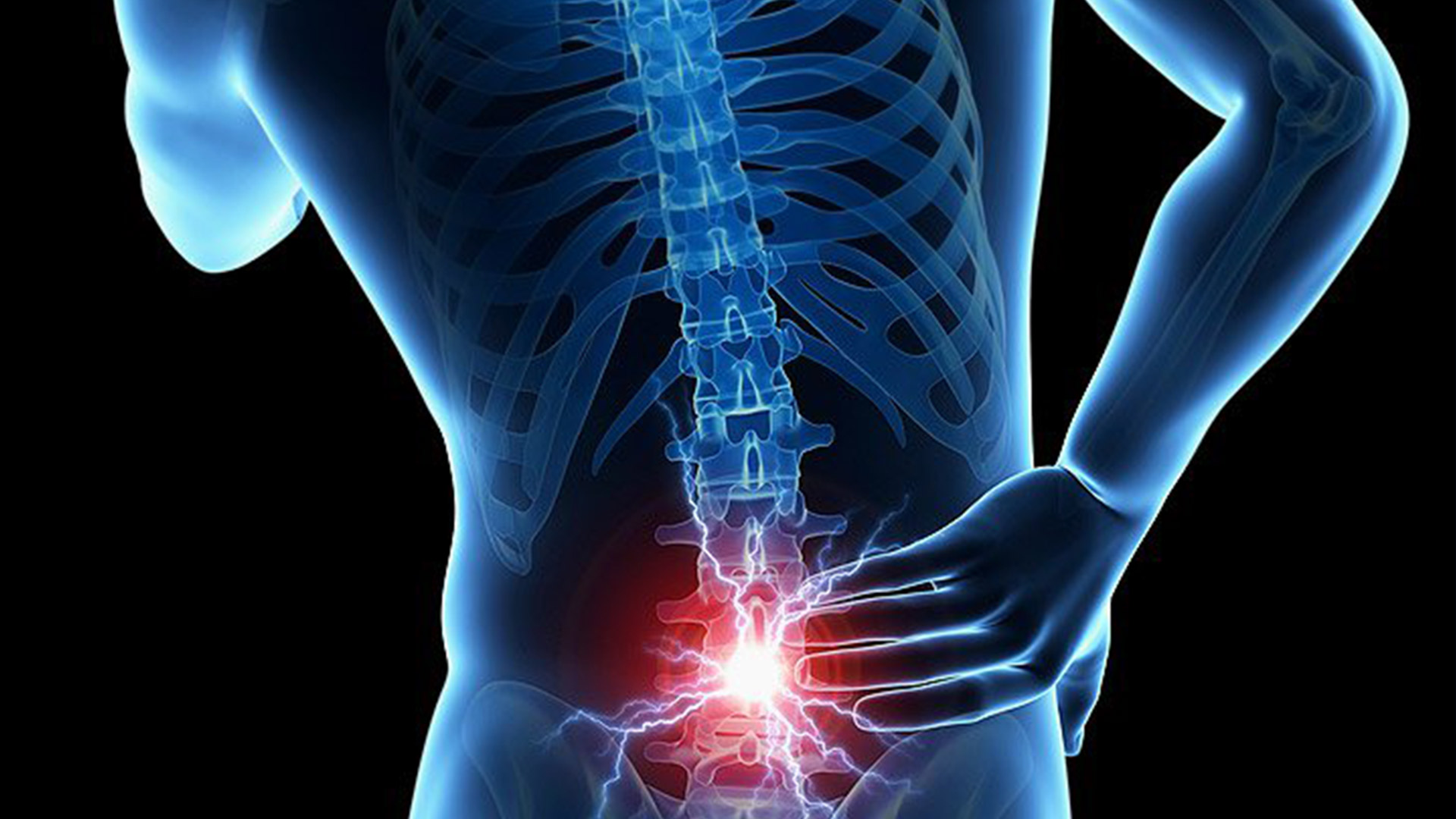- Prof. Dr. Şevki Erdem
- 0 Comments
It has been found that approximately 5% of patients who apply to a doctor due to back pain have a spinal slippage.
Spondylolisthesis is the displacement of the vertebrae on top of each other forwards or backwards. The medical term used for spinal slippage is spondylolisthesis.
Just like the beads on a necklace or a prayer bead that are arranged in a specific order in a line through the string or chain, the spinal bones are also arranged in a specific order on top of each other. The joints and ligaments between the bones ensure that the spinal bones are properly aligned.
In case of spondylolisthesis, the spinal cord and nerves passing through the spinal canal can be stretched, compressed and put under pressure. As a result of the stretching, compression and irritation, symptoms similar to those of a herniated disc such as back pain, hip and leg pain, numbness, and tingling can occur. In rare cases, the patient’s ability to urinate and defecate may also be affected due to nerve compression caused by spondylolisthesis.
Spondylolisthesis, the slipping of one vertebra in relation to another, can be caused by various factors such as congenital malformations of the spinal joints, previous injuries or trauma, stress fractures of the joints also known as spondylolysis, joint inflammation or arthritis, and many other conditions.
In elderly people, spinal slippage may develop due to the wear and tear of joints and ligaments, regardless of whether there is a stress fracture or not.
How is it diagnosed?
Diagnosis of spondylolisthesis usually requires normal X-rays of the spine. It is important to know whether the slippage of the spinal bones between each other is increasing with bending forward and backward for treatment planning, so X-rays in different positions of the spine are necessary.
A CT scan can be performed to search for stress fractures that are not always easy to detect on normal X-rays.
With an MRI, the structure of the spine, the condition of the joints and nerves, and nerve compression can be examined.

How is it treated?
For the treatment of spinal slippage, the first step is to eliminate the causes that strain the back and lead to the development of fractures or cracks in the spinal joints. This is followed by limiting movements that strain the back.
In cases where the symptoms are not severe and the slippage is not advanced, treatment options such as pain relievers, physical therapy, weight loss to reduce the load on the back, and strengthening of the back and abdominal muscles should be considered.
If satisfactory improvement in pain and similar complaints caused by lumbar spondylolisthesis can be achieved permanently with simple initial treatments, there is no need for lumbar spondylolisthesis surgery.
Is surgery necessary?
If pain and other complaints cannot be permanently relieved with drug therapy and similar primary treatments, and if there is more mobility between the spinal bones than normal, and if there is irritation or damage to the spinal cord and nerves due to pressure, then surgery should be performed for spondylolisthesis.
It is important to determine whether there is abnormal movement between the vertebrae in order to decide on spondylolisthesis surgery.
How is spondylolisthesis performed?
Spinal stenosis surgeries are generally feared and considered extremely risky, such as being paralyzed or disabled, by the public.
On the one hand, the experience of the surgical team and on the other hand, the technological facilities used during the surgeries significantly reduce the risks of the surgeries.
Spinal stenosis surgery is performed to relieve pressure on the spinal cord and nerves, and to ensure that the spinal bones are properly and evenly positioned on top of each other.
To relieve pressure on the spinal cord and nerves, during the surgery, a portion of bone tissue that is causing compression can be removed or filed down.
In order to ensure that the spinal bones are aligned properly and without causing any pain, a system of screws and plates known as “hardware” is used to secure the bones in the correct position during the surgery.
Following the surgery, a back brace is required until the bones start to heal and fuse together properly.
Afterwards, exercises to strengthen the back and abdominal muscles are recommended for the patient.


